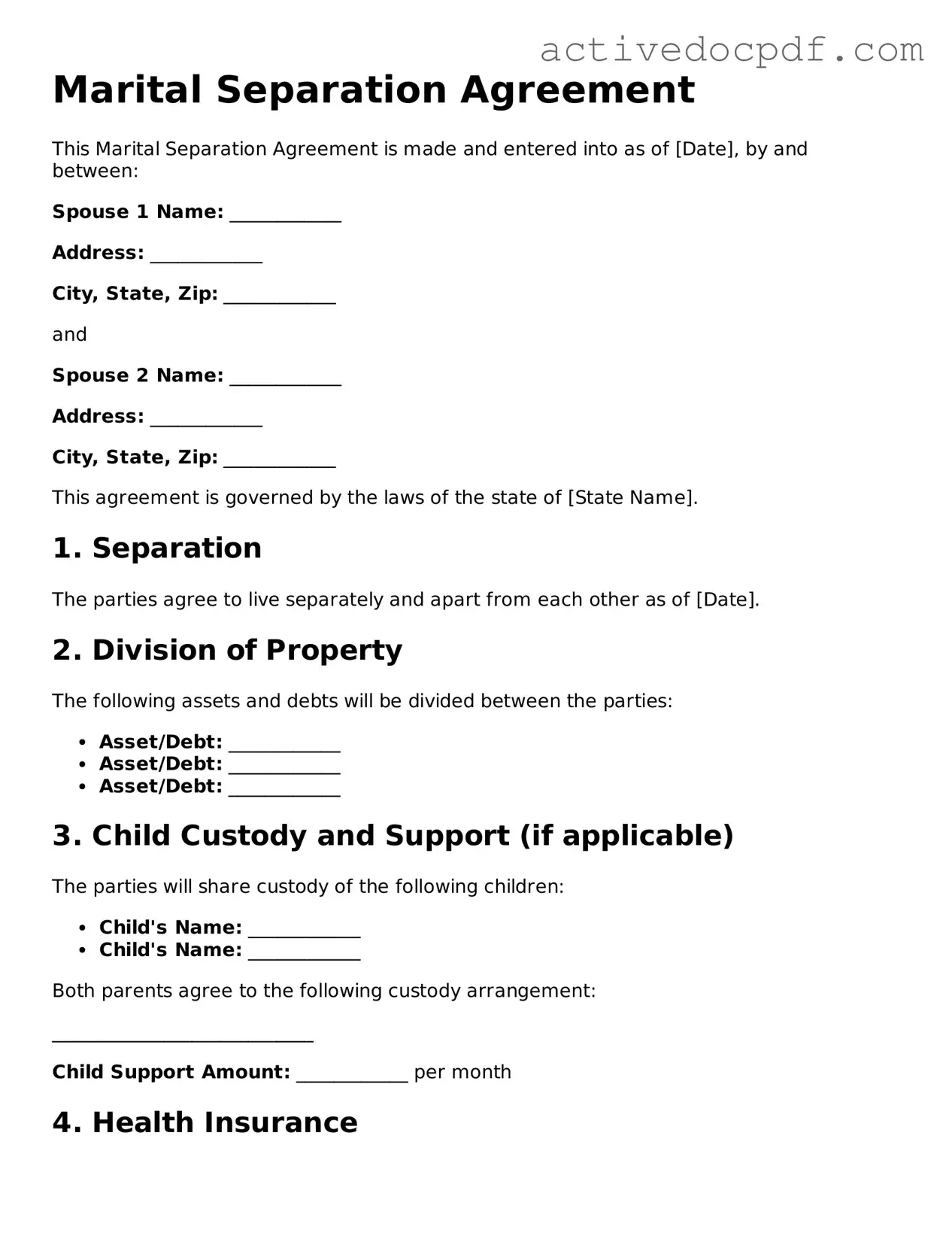What is a Marital Separation Agreement?
A Marital Separation Agreement is a legal document that outlines the terms of a couple's separation. It addresses various aspects such as property division, child custody, and financial responsibilities. This agreement helps ensure that both parties have a clear understanding of their rights and obligations during the separation period.
Why should I consider a Marital Separation Agreement?
Creating a Marital Separation Agreement can provide several benefits, including:
-
Clarity on financial responsibilities and asset division.
-
Legal protection for both parties.
-
Reduction of potential conflicts during the separation.
-
Guidance for co-parenting arrangements if children are involved.
Is a Marital Separation Agreement legally binding?
Yes, a Marital Separation Agreement is generally considered legally binding, provided it meets certain requirements. Both parties must voluntarily agree to the terms, and it should be signed in the presence of a notary public. However, it is advisable to consult with a legal professional to ensure that the agreement is enforceable in your state.
What should be included in a Marital Separation Agreement?
A comprehensive Marital Separation Agreement typically includes the following elements:
-
Division of property and assets.
-
Debt responsibilities.
-
Child custody and visitation arrangements.
-
Child support and spousal support obligations.
-
Health insurance and other benefits.
Can I modify a Marital Separation Agreement after it is signed?
Yes, a Marital Separation Agreement can be modified if both parties agree to the changes. It is important to document any modifications in writing and have them signed and notarized to ensure their enforceability.
How does a Marital Separation Agreement affect divorce proceedings?
A Marital Separation Agreement can simplify divorce proceedings by providing a clear framework for asset division and other issues. Courts often look favorably upon such agreements, as they demonstrate that both parties have made an effort to resolve their differences amicably.
Do I need a lawyer to create a Marital Separation Agreement?
While it is not legally required to have a lawyer, it is highly recommended. A legal professional can help ensure that the agreement is fair, comprehensive, and complies with state laws. This can prevent potential disputes in the future.
What happens if we cannot agree on the terms of the Marital Separation Agreement?
If both parties cannot reach an agreement, mediation may be a viable option. A mediator can help facilitate discussions and guide both parties toward a mutually acceptable resolution. If mediation fails, it may be necessary to pursue legal action to resolve the disputes.
How can I ensure my Marital Separation Agreement is fair?
To ensure fairness, both parties should openly communicate their needs and concerns. Seeking the assistance of a mediator or legal professional can also help. Additionally, consider gathering financial documents and other relevant information to create a transparent agreement that reflects both parties' interests.
